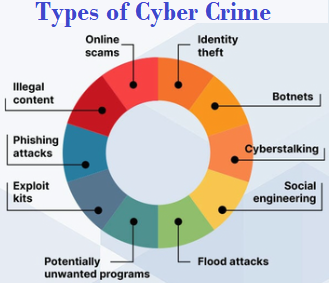Table of Contents
Context: I-Soon (a private company that competed for Chinese government contracts) was able to breach government offices in India, Thailand, Vietnam and South Korea, according to cybersecurity firms SentinelLabs and Malwarebytes.
What is Cyber Security?
- Cybersecurity refers to the practice of protecting computers, servers, networks, electronic systems, and digital data from unauthorised access, theft, damage, or disruption.
- It involves implementing measures and employing technologies and processes to ensure the confidentiality, integrity, and availability of information and systems.
- Cybersecurity is necessary to protect sensitive data, preserve operational continuity, and mitigate financial risks posed by evolving cyber threats and crimes in the digital landscape.

Elements Of Cyber Security
- Application security: Applications play an essential role in business ventures; that is why every firm needs to focus on web application security. Web application security is important to protect customers, their information and interests.
- Information security: Information includes business records, personal data, customer data, intellectual property etc; hence, a corporation needs to have strong cyber security for information to prevent its leakage.
- Network Security: Network security consists of protecting the usability and reliability of networks and data. Measures to secure networks include firewalls, intrusion detection and prevention systems (IDPS), virtual private networks (VPNs), and network segmentation.
- Disaster Recovery/ Business continuity planning: It is about being prepared for any kind of interference or cyber threat by identifying threats to the systems on time and analysing how they may affect the operations and methods to counter that threat.
- Operational security (OPSEC): It is used to protect organisation functions. It identifies important information and assets to track down threats and vulnerabilities that exist in the functional method.
- End-user education: An organisation needs to train their employees about cyber security because human error is one of the major causes of data breaches.
We’re now on WhatsApp. Click to Join
Current Cyber Security Architecture in India
- National Cyber Security Policy, 2013: It was the first comprehensive document brought out by the government to create a secure and resilient cyberspace ecosystem and strengthen the regulatory framework.
- It aims to protect information infrastructure in cyberspace, reduce vulnerabilities, and build capabilities to prevent and minimise damage from cyber incidents through a combination of institutional structures, people, processes, technology and cooperation.
- National Cyber Security Strategy 2020: It was conceptualised by the National Security Council Secretariat to ensure a safe, secure, trusted, resilient and vibrant cyberspace for the Nation’s prosperity.
- Pillars of strategy are Secure (the National Cyberspace), Strengthen (Structures, People, Processes, Capabilities), and Synergise (Resources including Cooperation and Collaboration).
Institutional Mechanism
- Indian Cyber Crime Coordination Centre (I4C): It was rolled out by the Ministry of Home Affairs for the period 2018-2020 to combat cybercrime in the country, in a coordinated and effective manner.
- Indian Computer Emergency Response Team (CERT-In): It serves as the national agency for responding to cyber security incidents as per provisions of the IT Act, 2000. It issues alerts and advisories regarding the latest cyber threats/vulnerabilities and countermeasures to protect computers and networks regularly.
- Cyber Swachhta Kendra (Botnet Cleaning and Malware Analysis Centre): It has been launched for the detection of malicious programs and provides free tools to remove them same. o National Cyber Crime Reporting Portal: It caters to complaints about cybercrimes only with a special focus on cybercrimes against women and children.
- National Cyber Coordination Centre (NCCC): It is a multi-stakeholder cybersecurity and e-surveillance agency, under CERT-In. It generates situational awareness of existing and potential cyber security threats and enables timely information sharing for proactive, preventive and protective actions by individual entities.
- National Critical Information Infrastructure Protection Centre (NCIIPC): It is created under IT Act, 2000 (amended 2008) and designated as the National Nodal Agency to facilitate safe, secure and resilient information infrastructure for critical sectors of the Nation.


 GPS Spoofing and Its Impact in India: A ...
GPS Spoofing and Its Impact in India: A ...
 Amrit Gyaan Kosh Portal: A Comprehensive...
Amrit Gyaan Kosh Portal: A Comprehensive...
 UpLink Initiative: Launched by World Eco...
UpLink Initiative: Launched by World Eco...





















